
2.2 Topological matrices
For an analytical description of electric circuit graphs and their storage in computer memory in a digital form it is more convenient to represent graphs in the form of topological matrices. There are incidence matrices (node matrices), loop matrices and graph section matrices.
2.2.1 Incidence matrices
It is
said that if the node
![]() is the end of the branch
then they are incident. Information contained in a directed graph can
be fully represented by a matrix called incidence matrix (node
matrix).
is the end of the branch
then they are incident. Information contained in a directed graph can
be fully represented by a matrix called incidence matrix (node
matrix).
The
![]() matrix is called the incidence matrix
matrix is called the incidence matrix
![]() which corresponds to the directed graph with “
which corresponds to the directed graph with “![]() ”
nodes and “
”
nodes and “![]() ”
branches
”
branches
![]() (2.1)
(2.1)
where
![]() is the element of the
matrix;
is the element of the
matrix;
=1 if the branch is incident to the node and directed from the node; =-1 if the branch is incident to the node and directed to the node; =0 if the branch is not incident to the node . For instance, we will obtain the matrix (2.2) for the directed graph according to Fig. 2.3,c. It’s clear from the matrix that the number of non – zero elements in each line of the matrix is equal to the number of branches incident to the corresponding node. Each column contains only
![]()
![]()
![]()
![]()
![]() branches
branches
=![]()
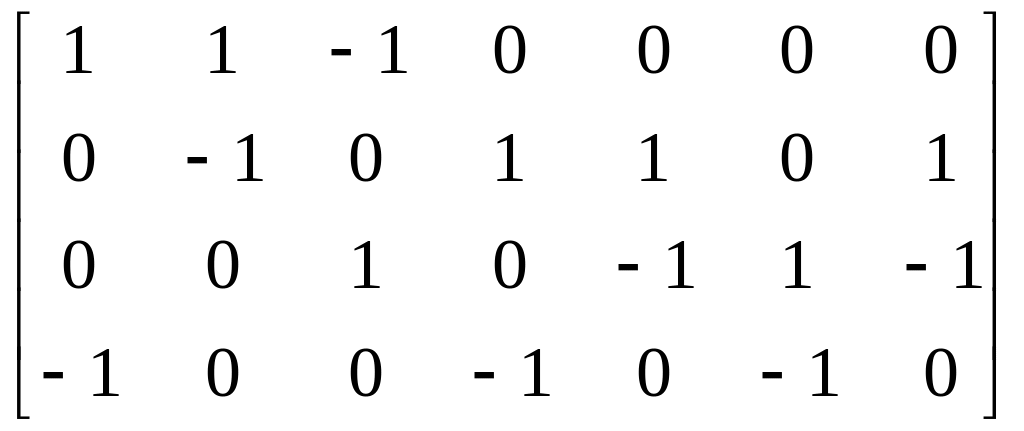
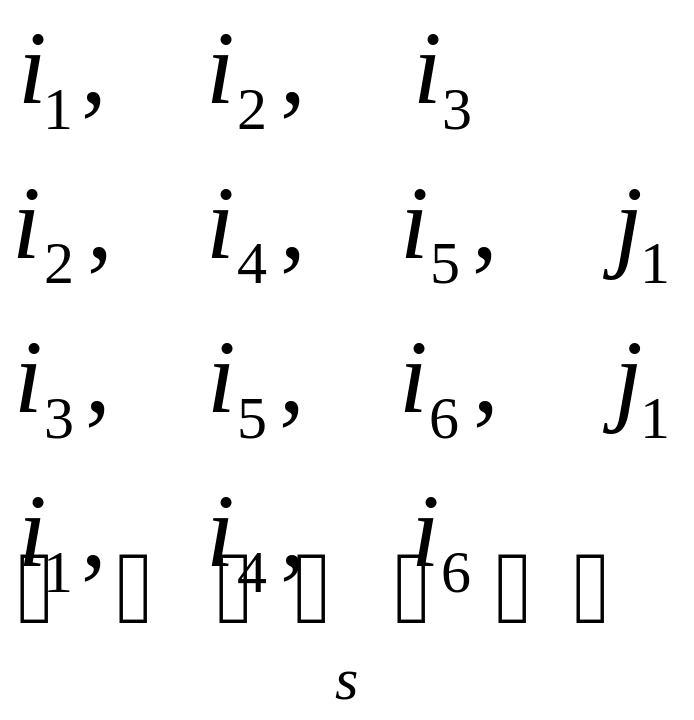 (2.2)
(2.2)
incident branches
two non – zero elements: “+1” and “-1” because each branch is incident to two nodes and directed from one of them to the other. The sum of all elements of each column and, consequently, the sum of all matrix lines is equal to zero, i.e. the matrix lines are linearly dependent. Therefore, it’s possible to exclude any line of the matrix without any information loss. So, when the 4-th line is excluded in (2.2) we get:
![]() =
=![]()
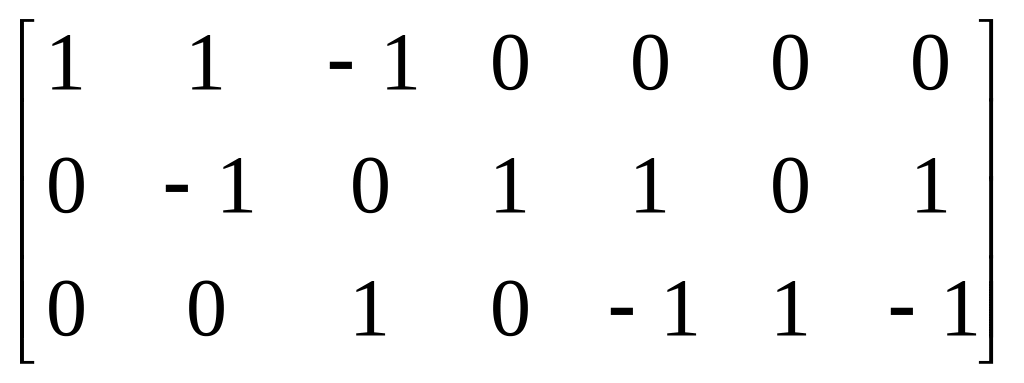 (2.3)
(2.3)
Matrix is called the reduced incidence matrix.
2.2.2 The loop matrix
Topological matrixes can be compiled for circuit loops too.
![]() =
=![]() (2.4)
(2.4)
where,
![]() are elements of the matrix
.
=1
if the branch
is incident to the loop
and coincides with the direction of loop path-tracing;
=-1
if the branch
is incident to the loop
and opposite to the direction of loop path tracing;
=0
if the branch
is not incident to the loop
.
The loop matrix
corresponding to the directed graph with “
are elements of the matrix
.
=1
if the branch
is incident to the loop
and coincides with the direction of loop path-tracing;
=-1
if the branch
is incident to the loop
and opposite to the direction of loop path tracing;
=0
if the branch
is not incident to the loop
.
The loop matrix
corresponding to the directed graph with “![]() ”
loops and “
”
branches, is the name for the matrix
”
loops and “
”
branches, is the name for the matrix
![]() .
For instance, for the directed graph in Fig. 2.3,c we will get the
matrix (2.5) when loop path-tracing is clockwise. Here, the branch of
the current source
is not used in the matrix because such a branch does not form a
separate loop as mentioned above.
.
For instance, for the directed graph in Fig. 2.3,c we will get the
matrix (2.5) when loop path-tracing is clockwise. Here, the branch of
the current source
is not used in the matrix because such a branch does not form a
separate loop as mentioned above.
It’s obvious that the parts of loops not used in the matrix (2.5) are linearly dependent. A loop, that includes at least one branch not being part of any other loops, is linearly independent.
branches
=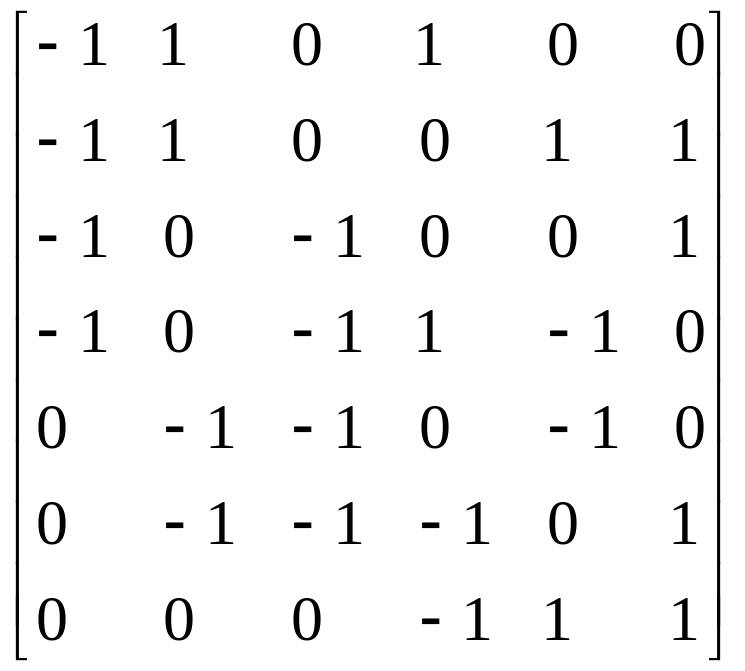
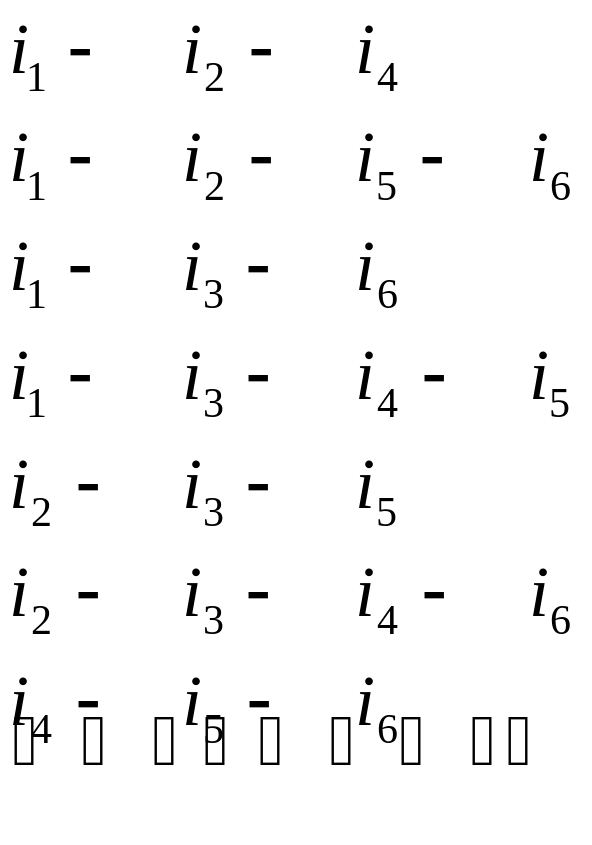
loops
For the
planar circuits it’s easy to define the number of independent loops
if we take these loops as meshes of the graph grid or “windows”.
So for the graph in Fig.2.3,c the loops will be the following:
![]()
![]() Then we get the submatrix
Then we get the submatrix
![]() from the matrix
.
from the matrix
.
=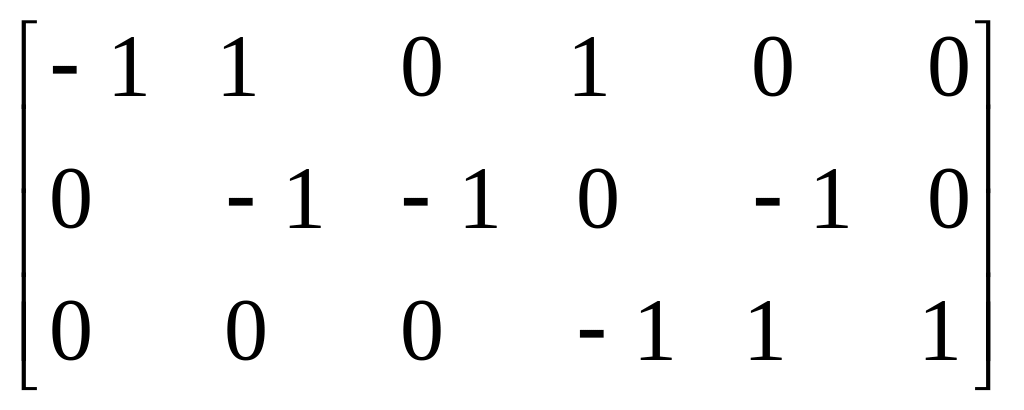
 (2.6)
(2.6)
The matrix is called the matrix of main loops.
For
nonplanar circuits, it is difficult to define the number of dependent
loops from the number of “windows” in the graph. In this case,
the T graph tree is used. A loop is formed by the connection of any
chord to a tree. This loop is called the main loop. The direction of
main loop path-tracing is taken as the chord direction. Thus, the
number of main loops is equal to the number of chords of the selected
graph tree. It is evident that it is equal to
![]() .
So, main loops for the tree in Fig. 2.3,b are formed by the chords:
chord
.
So, main loops for the tree in Fig. 2.3,b are formed by the chords:
chord
![]() loop
loop
![]() chord
chord
![]() loop
chord
loop
chord
![]() loop
loop
![]() Having arranged the edges in the lower columns, we get the matrix of
main loops
Having arranged the edges in the lower columns, we get the matrix of
main loops
![]() for
the graph with the tree in Fig. 2.3,b
for
the graph with the tree in Fig. 2.3,b
Tree chords
![]()
![]()
=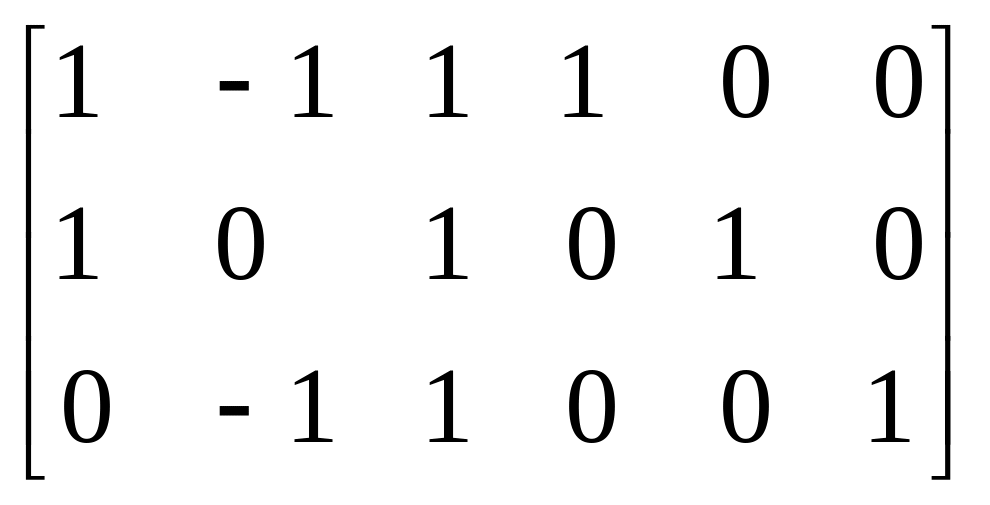
![]() (2.7)
(2.7)
As seen from (2.7), any matrix can be divided in the following way:
=![]() (2.8)
(2.8)
where
matrix
![]() corresponds to the edges
corresponds to the edges
![]() edges
edges
=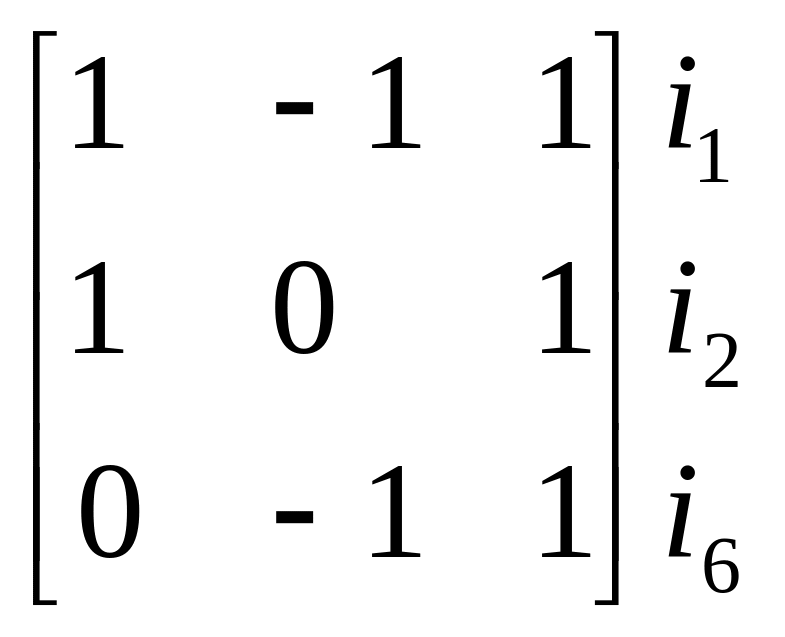 (2.9)
(2.9)
![]()
chords
Matrix 1 is a unit matrix and corresponds to the chords
![]() edges
edges
1=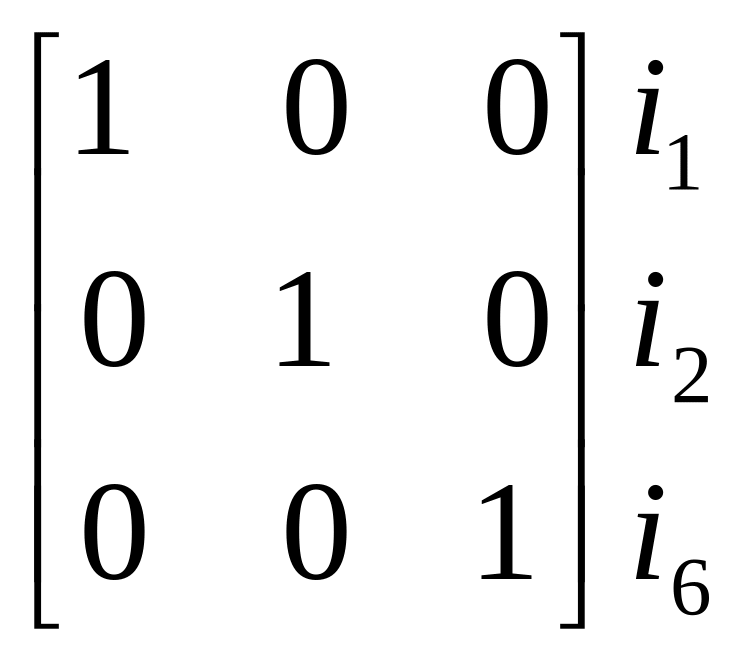 (2.10)
(2.10)
chords
So, because the unit matrix is present in the matrix , we can say that the lines of the matrix are linearly independent.
